![]()
![]()
![]()
Use LEFT and RIGHT arrow keys to navigate between flashcards;
Use UP and DOWN arrow keys to flip the card;
H to show hint;
A reads text to speech;
78 Cards in this Set
- Front
- Back
- 3rd side (hint)
|
goal of music education |
is to develop independent musicians through the use of conceptual teaching of musical skills |
|
|
|
Music teachers should |
be able to teach children how to sing in tune, keep a steady beat, listen to different styles of music appropriately, perform music expressively |
|
|
|
key elements upon which all music is based |
rhythm, melody, harmony, form, expression |
|
|
|
rhythm |
the varied lengths of sounds and silences in relation to the underlying beat typically called melodic rhythm or word rhythm |
|
|
|
Beat |
the pulse that is felt in the music |
|
|
|
Example: Happy Birthday |
the beat is the underlying pulse and the rhythm is the words to the song |
|
|
|
Tempo |
the speed of the underlying pulse of music |
|
|
|
Melodic rhythm |
is identified using musical notation |
|
|
|
Grave |
extremely slow |
|
|
|
Largo |
very slow |
|
|
|
Adagio |
slow--leisure pace |
|
|
|
Andante |
walking pace |
|
|
|
Moderato |
moderate |
|
|
|
Allegretto |
moderately quick |
|
|
|
Allergo |
fast |
|
|
|
Vivace |
Lively |
|
|
|
Presto |
Quick |
|
|
|
Quater Note |

Note |
|
|
|
Half note |
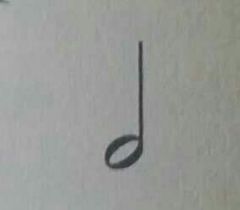
Note |
|
|
|
Quarter rest |

rest |
|
|
|
Half rest |

1/2 |
|
|
|
Two eighth notes |
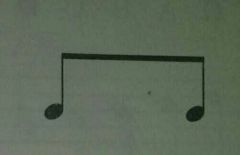
2 notes |
|
|
|
Eighth note |
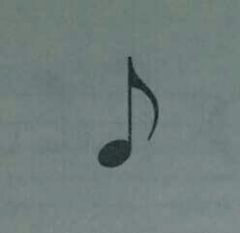
1 note |
|
|
|
Eighth rest |
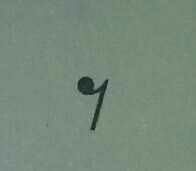
Rest |
|
|
|
Whole rest |
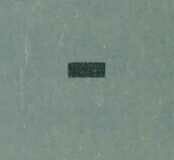
Rest |
|
|
|
Whole note |

Note |
|
|
|
Meter |
how musicians group steady beats |
|
|
|
duple meter |
when the beat is grouped in 2s can be felt as marching or walking |
|
|
|
triple meter |
when the beat is grouped in 3s can be felt as swaying to the music or a waltz |
|
|
|
melody |
the succession of sounds (or pitches) and silences that may move upward, downward, or stay the same the "tune" or the singable part of the song is the melody |
|
|
|
musical staff |
consist of 5 parallel lines and 4 spaces is needed to to read a musical tune |
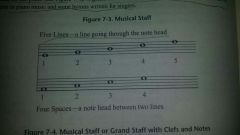
|
|
|
pitches |
are represented by symbols (notes) placed on the staff |
|
|
|
musical alphabet |
consist of 7 letters A B C D E F G |
|
|
|
clef signs |
are at the beginning of the song determine the pitch level, either higher or lower, or the song. |
|
|
|
treble clef |
is the signing range of women and the right hand of a piano |
|
|
|
bass clef |
is the singing range of men and the left hand of the piano |
|
|
|
grand staff |
combines both treble/bass clefs and can be seen in piano music and some hymns written for singers |
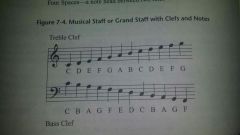
|
|
|
mneumonics |
used when teaching the names of the lines and spaces in both clefs. |
|
|
|
mnemonics for treble clef |
lines is "Every Good Boy Does Fine" spaces is F.A.C.E. |
|
|
|
mnemonics for Bass Clef |
lines is "Good Boys Do Fine Always" spaces is "All Cows Eat Grass" |
|
|
|
interval |
is the distance between two pitches all are identified by a number, except unison and octave |
|
|
|
Unison |
is two sounds of an identical pitch |
|
|
|
Octave |
is the distance between one pitch and the next pitch with the same name eight steps apart |
|
|
|
intonation |
can refer to one being flat (below the pitch) or sharp (higher than the pitch) |
|
|
|
good intonation |
is when someone is playing/singing in tune (with correct pitch accuracy) |
|
|
|
harmony |
is usually the accompaniment or supportive sounds in a melody typically played by a pitched instruments, such a piano, guitar, or autoharp |
|
|
|
teaching harmony to kids |
can be by singing the melody and playing the simple accompaniment on the ukulele by having them sing in at least two parts |
|
|
|
ostinato |
a pattern that repeats itself it's a good way to teach harmony for 1st-2nd graders |
|
|
|
round |
is where everyone sings the melody and subsequent voices enter at specific intervals after the leader |
|
|
|
partner songs |
another example of harmony where two different songs can be sung at the same time |
|
|
|
form |
is the structure or design of music |
|
|
|
phrase |
is a musical line that contains groups of pitches is similar to a sentence in language |
|
|
|
several musical phrases |
are like several sentences that make up a paragraph |
can define a song |
|
|
musical form |
analogous to mathematical patterns |
|
|
|
Common forms in elementary music |
are binary (AB), ternary (ABA), theme and variation (A A1 A2 A3 A4 etc.) and rondo (ABACA) |
|
|
|
expression |
consist of dynamics and timbre |
|
|
|
dynamics |
is a term used by musicians to represent louds and softs music children usually confuse dynamics with pitch level/melodic direction |
|
|
|
Piano |
Soft |
|
|
|
Mezzo piano |
medium soft |
|
|
|
Mezzo forte |
medium loud |
|
|
|
Forte |
Loud |
|
|
|
Timbre |
is defined as tone color in music (refers to the quality of sound that distinguishes one voice or instrument from another |
|
|
|
kindergarteners distinguish between 4 human voices |
speaking whispering calling singing |
|
|
|
singing voices |
soprano alto tenor baritone bass |
|
|
|
The Kodaly Method |
main goals: to instill the love on music into all children, to have children achieve music literacy, start music education in early childhood, teach music sequentially, use quality folk songs, and cultivate the singing voice |
|
|
|
vital teaching porcess in the Kodaly method |
3 P's: preparation- the teacher prepares the concept presentation- teaches the concept practice- then, through repetition and review, masters the concept tools used- solfege (do re mi fa sol la ti do), hands signs (to present a visualization in space of the high-low relationships of the pitches being sung), and rhythm syllables (the music notation without the note head) |
other tools include musical flashcards, stick notation and musical ladders that show the melodic direction of the music |
|
|
Kolady method primary goal |
to teach music literacy and singing is the vehicle to achieve this goal |
|
|
|
Zolton Kolady believed that music was |
meant to develop one's entire being personality, intellect and emotions. |
|
|
|
Orff Schulwerk |
is a "learning by doing" approach to teaching music; |
|
|
|
Orff teaching approach is based |
on what is most natural to children: singing, moving, chanting, creating, improvising, and playing instruments |
|
|
|
Orff beleived |
that speech is tied to rhythm and rhythm is the strongest musical element. |
|
|
|
Orff ensemble include |
unpitched rhythm instruments or classroom percussion and melodic instruments or barred instruments. are used to accompany the songs/rhymes |
|
|
|
unique to Orff |
barred (melody) instruments |
|
|
|
three sizes of xylophones and metallophone |
bass, alto, soprano bars made of wood (xylophone) bars made of metal (metallophone) and have a ringing timbre that is important in the ensemble |
|
|
|
orff instruments |
are typically found and played in elementary music classes |
|
|
|
best singing range for K-2 |
is from D-A |
|
|
|
best singing range for 3-6 |
is from D-D |
|
|
|
children in K-6 have a |
breathy tone quality and should not be asked to sing louder or project their voice |
|

